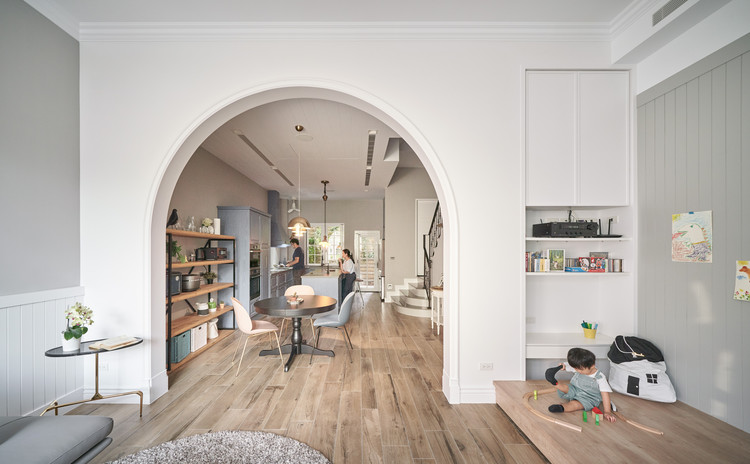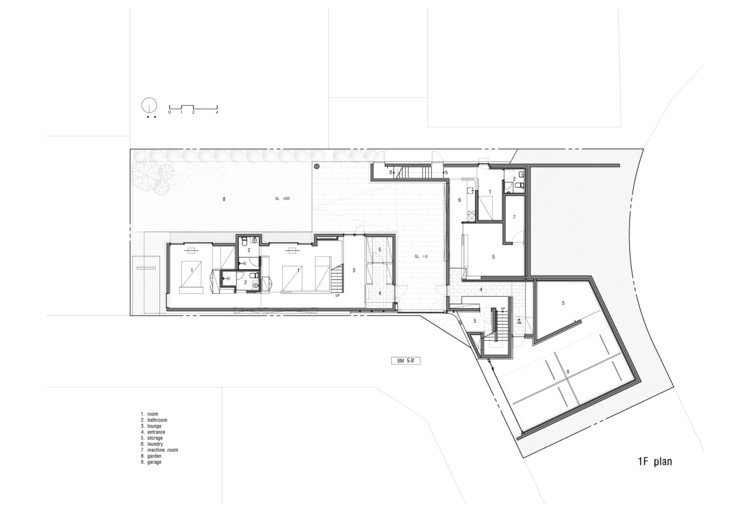MoMA PS1 YAP 2014 Runner
2014-03-22 01:00
安德伯格是参加年度MoMA PS1青年建筑师项目(YAP)竞赛的五项提案之一,该竞赛被生活的可堆肥砖塔赢得。更多关于这个提议,休息后.。
Underberg was one of five proposals shortlisted for the annual MoMA PS1 Young Architect’s Program (YAP) competition, which was won by the Living’s compostable brick tower. More on this proposal, after the break...
The view from the 7 train. Image © LAMAS
Sucking in cold, blowing out hot, bouncing off sun; Underberg is keeping it all cool. Image © LAMAS
吸进寒冷,吹出炎热,反弹太阳;安德伯格保持一切凉爽。图像C
冰下的世界展现为一种神奇的都市主义。砖块的边缘滴落着,仿佛它们正在融化,创造出空间,就像有雨的房间,而不是墙壁。圆管拱顶将派对直接引向舞台和博物馆。一个冰川湖形成在一个大圆形拱顶下。在整个街道的墙壁上,一系列错综复杂的大理石图案对市民来说是一种本能的探索。
The world under the ice unfolds as a kind of magical urbanism. The edges of blocks drip as if they are melting, creating spaces like rooms with rain instead of walls. A barrel vault ceiling directs the party straight to the stage and the museum. A glacial lake forms under the vault of a large rotunda. Throughout the walls of the streets an intricate series of marble patterns acts as a kind of instinctual wayfinding for its citizens.
Soaking in the dome pool. Image © LAMAS
50英尺高的罗恩塔将整个结构从地面上用电缆固定在一个经过调整的张拉框架中。这些塔,反过来,被锚定到地面,通过一个铺展的基础上的地面螺丝。两极代表了结构的概念,但它们也包括巨大的进气口和排气口,以使冷空气始终通过庭院;在南方,三根凉爽的白色杆子接受盛行的风并将其吹过水面,而在北侧,三根炽热的黑柱通过烟囱效应将暖空气吸出。
Fifty-foot Rohn towers hold the entire form up off the ground with cables in an adapted tensegrity frame. These towers, in turn, are anchored to the ground through a spread footing of ground screws. The poles represent the idea of structure, but they also comprise the giant air intakes and exhaust to keep cool air going through the courtyard at all times; on the south, three cool white poles accept the prevailing wind and blow it over the water features, while at the north side the three hot black poles draw out warm air through the chimney-stack effect.
From “times square” looking at Rain Row. Image © LAMAS
真正的冰山根源,安德伯格只有通过它的可持续性生存。通过重用和低能量的结合,它是可持续的。电线杆是预制的电信塔,一旦在院子里完成了工作,就会转售出去。冰川形式和大理石表面是由特维克(Tyvek)制成的,泰维克是一种极低能量的物质。它被制作成类似于石头,使用了几个世纪前的水大理石花纹。尽管Tyvek可以被回收利用,但它的第二个生命被设想在图形包装上:它将被美国服装重新定位,用于收集有限的外套和夹克,以使我们在冬季保持温暖。
True to its iceberg roots, Underberg only survives by its sustainability. It’s sustainable through a combination of reuse and low embodied energy. The poles are prefabricated telecommunications towers; once their job in the courtyard is done, they will be resold. The glacial forms and marble surfaces are made out of Tyvek, an extremely low–embodied energy material. It has been crafted to resemble stone using the centuries-old practice of aqueous marbling. Even though the Tyvek could be recycled, a second life is envisioned for the graphic wrapper: it will be repurposed by American Apparel for a limited collection of coats and jackets to keep us warm in the winter.
纽约长岛市杰克逊大道22-25号、纽约长岛市MoMA PS1、纽约长岛市杰克逊大道22-25号、美国类时态装置建筑师主管建筑师:魏汉·维维安·李、詹姆斯·麦克利夫雷设计小组帕特里克·埃森(项目经理)、米西·阿布林、安德里亚·卡米拉里斯、詹妮弗·科莫洛夫斯基、Soonjae Kwon、欧文·马希尔、Le Nguyen、Elizabeth Nichols、Max Obata结构工程师Nat Oppenheimer、Robert Silman Associates机械工程师Lars Junghans,密歇根大学织物顾问Wade Wesson,Dazian创作织物环境电影
Architects LAMAS Location MoMA PS1, 22-25 Jackson Avenue, Long Island City, NY 11101, United States Category Temporal Installations Architects In Charge Architects in charge: Wei-Han Vivian Lee, James Macgillivray Design Team Patrick Ethen (project manager), Missy Ablin, Andrea Kamilaris, Jennifer Komorowski, Soonjae Kwon, Owen Maher, Le Nguyen, Elizabeth Nichols, Max Obata Structural Engineer Nat Oppenheimer, Robert Silman Associates Mechanical Engineer Lars Junghans, University of Michigan Fabric Consultant Wade Wesson, Dazian Creative Fabric Environments Film by Ellen Coons Text LAMAS Project Year 2014 Photographs LAMAS
 举报
举报
别默默的看了,快登录帮我评论一下吧!:)
注册
登录
更多评论
相关文章
-

描边风设计中,最容易犯的8种问题分析
2018年走过了四分之一,LOGO设计趋势也清晰了LOGO设计
-

描边风设计中,最容易犯的8种问题分析
2018年走过了四分之一,LOGO设计趋势也清晰了LOGO设计
-

描边风设计中,最容易犯的8种问题分析
2018年走过了四分之一,LOGO设计趋势也清晰了LOGO设计






















































